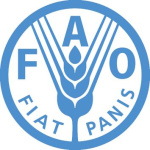- Domeniu: Agriculture
- Number of terms: 87409
- Number of blossaries: 0
- Company Profile:
Established in October 1945 with the objective of eliminating hunger and improving nutrition and standards of living by increasing agricultural productivity, FAO coordinates the efforts of governments and technical agencies in programs for developing agriculture, forestry, fisheries, and land and ...
In quantitative genetics, the proportion of the phenotypic variance that is due to variation in breeding values.
Industry:Biotechnology
In quantitative genetics, the proportion of the total phenotypic variation due to genetic variation.
Industry:Biotechnology
In relation to any two loci, the occurrence of haplotypes (gametes) with a frequency equal to the product of the frequency of the two relevant alleles, e.g., loci A and B are in linkage equilibrium if the frequency of the haplotype (gamete) <i>A</i><sub>i</sub><i>B</i><sub>i</sub> equals the product of the frequencies of alleles <i>A</i><sub>i</sub> and <i>B</i><sub>i</sub>. a.k.a. linkage equilibrium, but this is a misleading term, because the concept applies equally to linked and unlinked loci.
Industry:Biotechnology
In relation to any two loci, the occurrence of haplotypes (gametes) with a frequency greater than or less than the product of the frequency of the two relevant alleles. <i>See also</i> gametic (phase) equilibrium.
Industry:Biotechnology
In statistics, an effect that cannot be explained by the additive action of contributing factors; a departure from strict additivity.
Industry:Biotechnology
In statistics, the arithmetic average; the sum of all measurements or values in a sample divided by the sample size.
Industry:Biotechnology
In statistics: The sum of the squared deviations, divided by one less than the number of observations. A statistical measure of variation in a population.
Industry:Biotechnology
1. the proportion of phenotypic superiority of parents that is seen in their offspring;
2. the proportion of the total phenotypic variation due to variation in breeding values.
In the broad sense: the proportion of the total phenotypic variation due to genetic variation. The degree to which a given trait is controlled by inheritance.
Industry:Biotechnology
In the ordinary course of events, one embryo is formed in each ovule and is derived from the fertilization of the ovum in the solitary embryo sac. However, two or more embryos could start development even though only one may reach maturity.
Industry:Biotechnology
In tissue culture, the particular formula for the culture medium. It commonly contains macro-elements and micro-elements (high and low salt), some vitamins (B vitamins, inositol), plant growth regulators (auxin, cytokinin and sometimes gibberellin), a carbohydrate source (usually sucrose or glucose) and often other substances, such as amino acids or complex growth factors. Media may be liquid or solidified with agar; the pH is adjusted (ca. 5-6) and the solution is sterilized (usually by filtration or autoclaving). Some formulations are very specific in the kind of explant or plant species that can be maintained; some are very general.
Industry:Biotechnology
